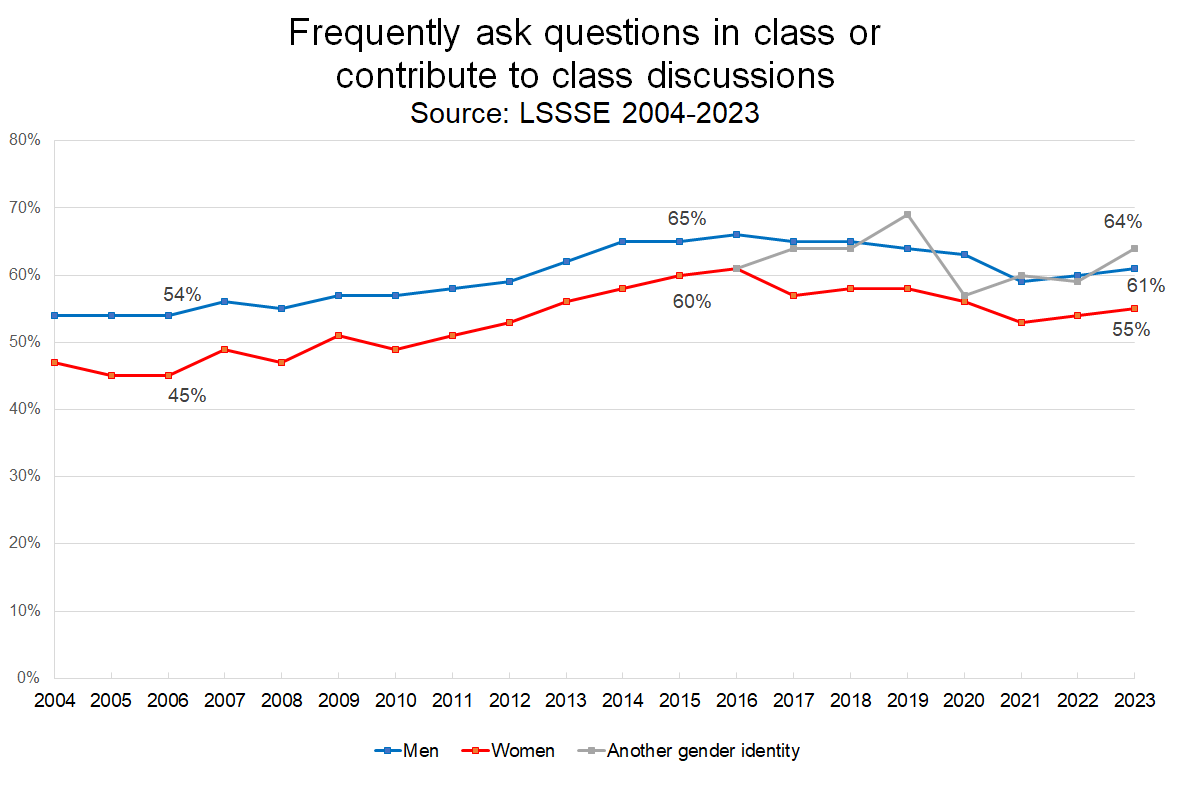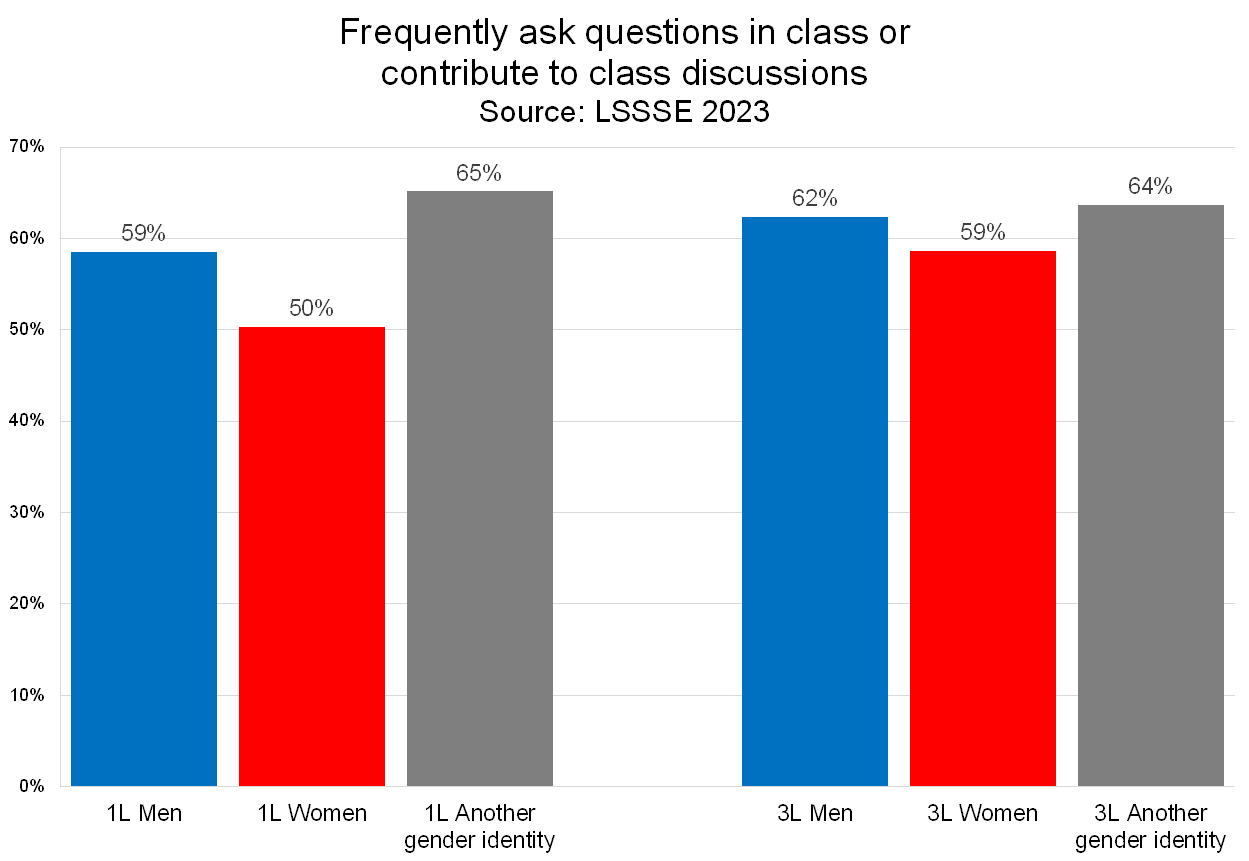In a 2018 blog post, we showed a long-standing pattern of class participation by gender among law students in which men engage more frequently in class discussions than women. Although the percentage of students who frequently ask questions in class or contribute to class discussions has fluctuated over time, the gap between men and women has stayed remarkably consistent since the inaugural LSSSE survey in 2004. How does this pattern look five years later?

Through a pandemic, a switch to online learning, and a switch back to in-person learning, the pattern has continued to be remarkably consistent. In 2023, 61% of male law students “often” or “very often” participated in class compared to only 55% of female students. Students of another gender identity also generally participate in class more often than women, with nearly two-thirds (64%) of them frequently asking questions or contributing to class discussions in 2023.
However, it appears that there are differences among classes in terms of participation by gender. 1L women are much less likely than 1L students of other genders to frequently ask questions or contribute to discussions, but 3L women are only somewhat less likely to do so relative to 3L students of other genders. Perhaps women gain confidence across their years as a law student or perhaps they become major contributors to class discourse only once they can be reasonably sure that their voices will be heard and respected.

Nonetheless, men and people of other gender identities are still slightly more likely to frequently ask questions or contribute to discussions even in that final year of law school. Finding ways to encourage women to participate in class conversations earlier will allow them to engage more meaningfully with their entire legal education in addition to elevating the discourse of the law classroom for all students.
